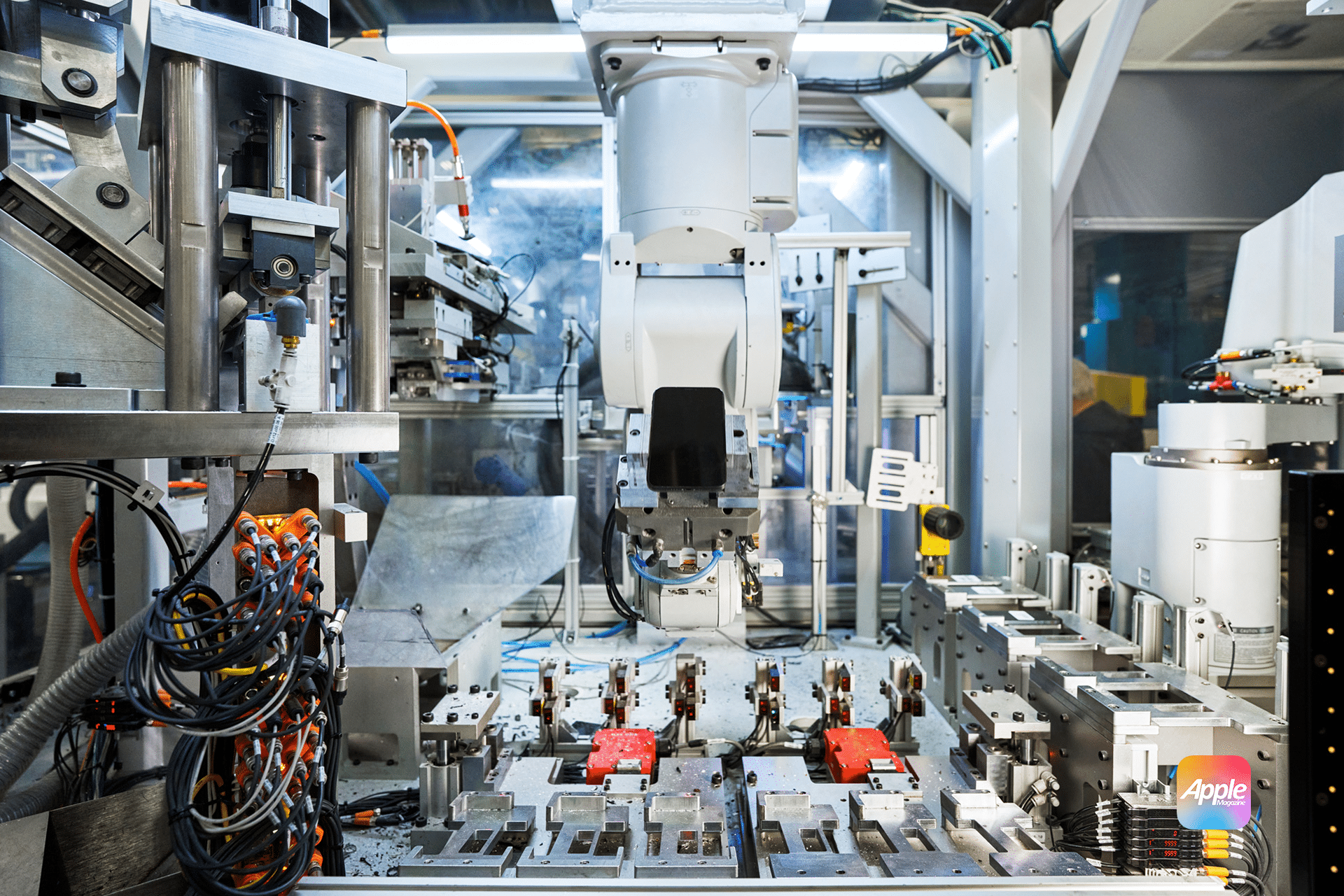Apple’s home robotics initiative is shrouded in secrecy, but experts believe it involves the development of smart devices designed to perform tasks, provide assistance, and enhance home automation experiences. This project is likely to align with Apple’s broader strategy of using artificial intelligence (AI), machine learning (ML), and spatial awareness to create more intuitive technology.
1. Robotic Assistants for Home Automation
One of the key possibilities for the Apple home robotics project is the creation of a robotic assistant capable of handling everyday tasks. This could include managing household chores, monitoring home security, and coordinating with other smart devices.
Such a device would leverage Apple’s AI capabilities, potentially powered by Siri, to respond to voice commands and anticipate user needs based on routines and preferences.
2. Integration with Smart Devices
Apple’s robotics technology would likely be designed to function as part of a larger smart home network. Devices such as the HomePod, Apple TV, and iPhone already play a role in home automation, offering voice control, media management, and security monitoring.
A home robot could act as the central hub for these devices, providing real-time data and control through advanced sensors and machine learning algorithms.
Why Apple Is Expanding Its Robotics Efforts
Apple’s accelerated hiring for its home robotics project suggests that the company is committed to becoming a leader in the growing smart home market. Here are some key reasons why Apple is prioritizing robotics development.
1. Meeting Growing Demand for Home Automation
The demand for home automation solutions has been steadily rising as consumers seek greater convenience, security, and energy efficiency. Companies like Amazon and Google have already made significant strides in this space with products like the Echo and Nest series.
Apple’s robotics initiative represents an opportunity to differentiate itself by offering a premium, privacy-focused alternative that integrates deeply with its network of devices.
2. Advancing AI and Machine Learning
Apple has invested heavily in AI and ML, with features like Siri, on-device privacy, and real-time data analysis becoming cornerstones of its products. Robotics provides a new avenue for Apple to showcase these technologies, applying them to physical tasks in the home.
By enhancing the intelligence of its smart devices, Apple aims to create a more personalized and adaptive user experience.
3. Expanding Product Ecosystem
Apple’s strategy has always been to create a cohesive network of products and services. A successful home robotics product could serve as a central component of this network, further encouraging users to adopt multiple Apple devices.
This expansion could also open up new revenue streams for Apple, including subscriptions for advanced home services and integrations with third-party smart devices.
Technological Challenges Apple Must Overcome
Developing a home robot presents a variety of technical hurdles that Apple will need to address. These challenges include hardware design, AI training, privacy concerns, and device interoperability.
1. Sensor and Navigation Systems
For a robot to function effectively in a home environment, it must be equipped with advanced sensors and navigation technology. Apple’s expertise in LiDAR (used in iPhones and iPads) could play a crucial role in enabling spatial awareness and obstacle avoidance.
The robot will also need to adapt to different layouts, lighting conditions, and object placements, requiring sophisticated AI algorithms.
2. AI-Driven Decision Making
Home robots must be capable of understanding complex tasks and making decisions in real time. For example, a robot might need to prioritize between vacuuming the floor and answering a user’s command to check the doorbell camera.
Apple will need to enhance Siri’s capabilities to support multi-tasking and contextual understanding, allowing the robot to interact naturally with users.
3. Privacy and Security
As with all Apple products, privacy and security will be key considerations for the home robotics project. Users will expect their data to remain secure, particularly given that home robots may collect sensitive information such as video footage, audio recordings, and location data.
Apple’s approach to on-device data processing and encryption will likely be central to addressing these concerns.
Potential Applications of Apple’s Home Robotics Project
The Apple home robotics project has the potential to transform multiple aspects of daily life, from household management to entertainment and education.
1. Home Maintenance and Monitoring
Robots could handle routine tasks such as cleaning, organizing, and maintaining household appliances. They could also monitor the home for security threats, alerting users to unusual activity or environmental hazards like fire and carbon monoxide.
2. Personal Assistance
Apple’s home robot could serve as a personal assistant, managing schedules, sending reminders, and coordinating with other smart devices. For instance, the robot might prepare the house for bedtime by dimming lights, locking doors, and adjusting the thermostat.
3. Health and Wellness Support
Incorporating features from Apple’s health initiatives, the robot could monitor wellness metrics such as sleep patterns, activity levels, and medication schedules. This would be particularly beneficial for elderly users and those with chronic conditions.
4. Education and Learning
Robots could provide interactive learning experiences for children, using augmented reality (AR) and AI to teach subjects like math, science, and language. This capability would align with Apple’s emphasis on educational technology and creativity tools.
Apple’s Competitive Position in Home Robotics
Apple’s entry into the home robotics space will put it in direct competition with major players such as Amazon, Google, and iRobot.
1. Amazon’s Astro Robot
Amazon has already released Astro, a home robot designed to assist with tasks like home monitoring and video calling. While Astro has faced mixed reviews, it highlights Amazon’s commitment to integrating robotics with Alexa and its broader smart home ecosystem.
Apple’s competitive advantage lies in its reputation for high-quality hardware, privacy protections, and seamless device integration.
2. Google’s AI and Smart Devices
Google’s focus on AI-driven services, including Google Assistant and Nest products, positions it as a formidable competitor. However, Google has yet to release a consumer-oriented home robot, giving Apple an opportunity to establish itself early in this market.
3. Specialized Robotics Companies
Apple may also face competition from specialized robotics companies like iRobot, known for its Roomba vacuum cleaners. These companies have years of experience in robotics but may struggle to match Apple’s software and hardware integration capabilities.
When Can We Expect Apple’s Home Robot?
While Apple has not provided a timeline for the release of its home robot, the increase in hiring suggests that development is accelerating. Industry analysts predict that Apple could announce a prototype within the next few years, possibly at a major event like WWDC.
Until then, Apple will likely continue refining its AI, sensors, and user interface technologies to ensure a polished product launch.
Apple’s investment in the Apple home robotics project marks a bold step toward the future of smart home technology. By leveraging its expertise in AI, hardware design, and privacy, Apple aims to deliver a groundbreaking product that enhances convenience, security, and connectivity in everyday life.
As Apple accelerates its robotics efforts, consumers can look forward to a new era of intelligent home automation. The project not only reinforces Apple’s innovation leadership but also has the potential to redefine how we interact with technology in our homes.
